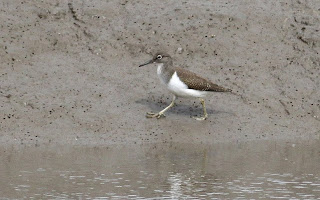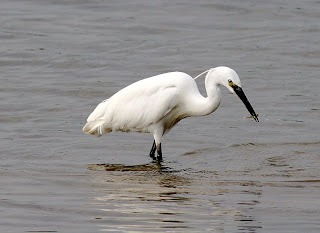With a couple of hours to spare I ventured out from Fluke Hall. I wanted to check out the numbers of Teal and the Little Egrets as the wildfowlers had told me of good numbers of both, plus I could continue up to Pilling Water for a look see.
The Teal hide away in the maize crop and pool margins but luckily for me a wagon arrived to tip slurry near the side of Worm Pool, the smelly mess attractive to 3 Pied Wagtails, if not for me sat just downwind of it.
As the wagon tipped backwards, the noise and disturbance caused the Teal to erupt from the pool in a fabulous flying display to rival The Red Arrows. Counting birds is imprecise at the best of times but I reckon there were at least 400 Teal, not up to the wildfowler’s estimate of 500, but what’s a hundred or so ducks between friends? In the picture below I think there are about 130 Teal, please feel free to practice duck counting here. But it’s certainly a good count for mid-August and the numbers can only increase, especially with the daily sacks of wheat provided.


The flying Teal attracted in a Peregrine from out on the marsh which appeared to mean business as it circled then stooped a couple of times at the massed Teal but didn’t catch. It quickly tired of the pursuit and as quickly as it flew in, it soared back out to the marsh. Maybe the Sparrowhawk was watching the action because no sooner had the Peregrine disappeared than it too flew quickly across the pool and dead ahead of me before continuing up towards Pilling Water.




It wasn’t nearly as action packed at Pilling Water, just a single Common Sandpiper, a Green Sandpiper and a Greenshank with 11 Little Egrets along the tidal channel which disappear into the ditches of the marsh when anyone appears along the wall. Passerine numbers were low with 3 Wheatear, and in contrast with recent days, a handful each of Linnet and Goldfinch. About 60 Swallows fed low across the fields and the dyke with very few House Martins today. I’m sure it was yesterday’s Kestrel hanging about the fence posts again, maybe it hasn’t learnt to hover yet as all it seems to do is sit around waiting for an easy meal or someone to come along with a camera.






































































